Every year interior design shifts its focus to different trends that reflect the new demands, attitudes, and inclinations of the public. Although these styles are clearly defined in interior design magazines and articles, the approaches one can take towards them are endless. This is the charm of interior design; that there is no single way of recreating a trend or style but rather only suggestions on how to adapt each style to your own personality and lifestyle. Parting from this point of view, we introduce you today to nine of the famous trends that are currently making a comeback in modern homes.

Maximalist
The Maximalist style is well known for its boldness and extravagance as it celebrates vibrant colors and the beauty in diversity of textures, patterns and objects. Nonetheless, we must remember that this design is about embracing abundance, not clutter. In the midst of the dance between saturated hues, layered patterns and textures, mural paintings, and statement furniture pieces, there is also a hidden aspect that guides the composition of such interiors. Balance is disguised under the visual and tactile effect emanated by the rich wallpapers, furniture materials, and vintage chandeliers.
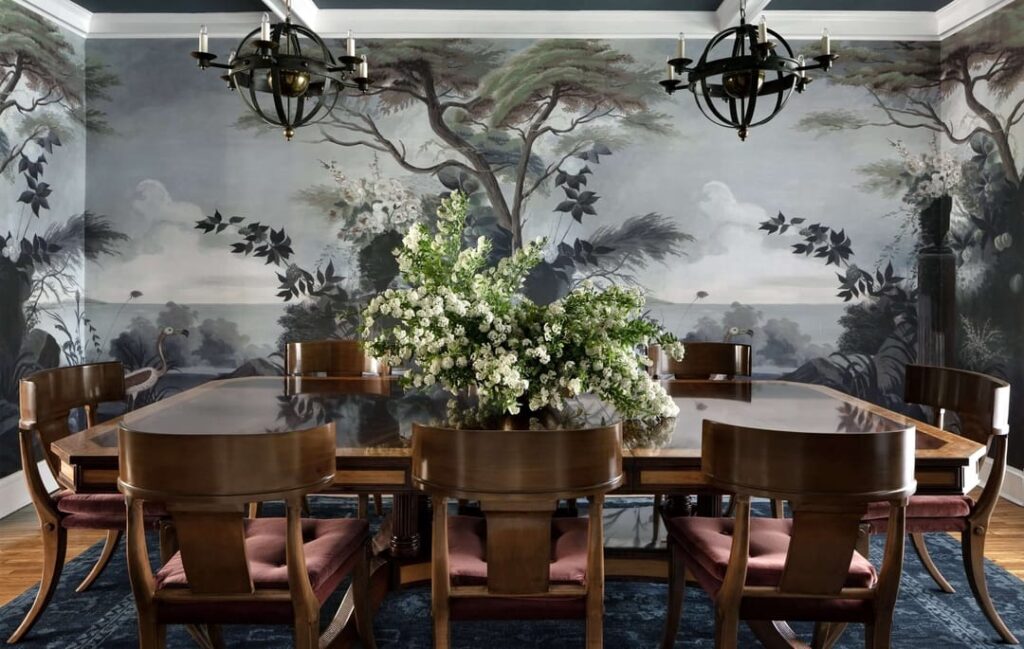
This harmony, as inconspicuous as it may be, rests upon the careful placement of neutral base tones under more vibrant shades and on leaving room to showcase single statement pieces such as an intricate dining table or oversized mirrors. It is also about creating a dramatic effect using large surfaces such as walls and ceilings to add metallic accents or textured wallpapers that immediately enhance the maximalist aesthetic. At all times, while focusing on this balance and strategic décor, the personal and welcoming aspect must remain present through the curated display of personal collections such as books or artwork and in the creation of a cozy and welcoming ambience with the layering of various fabrics like velvet and silk which create a lasting sensorial experience.
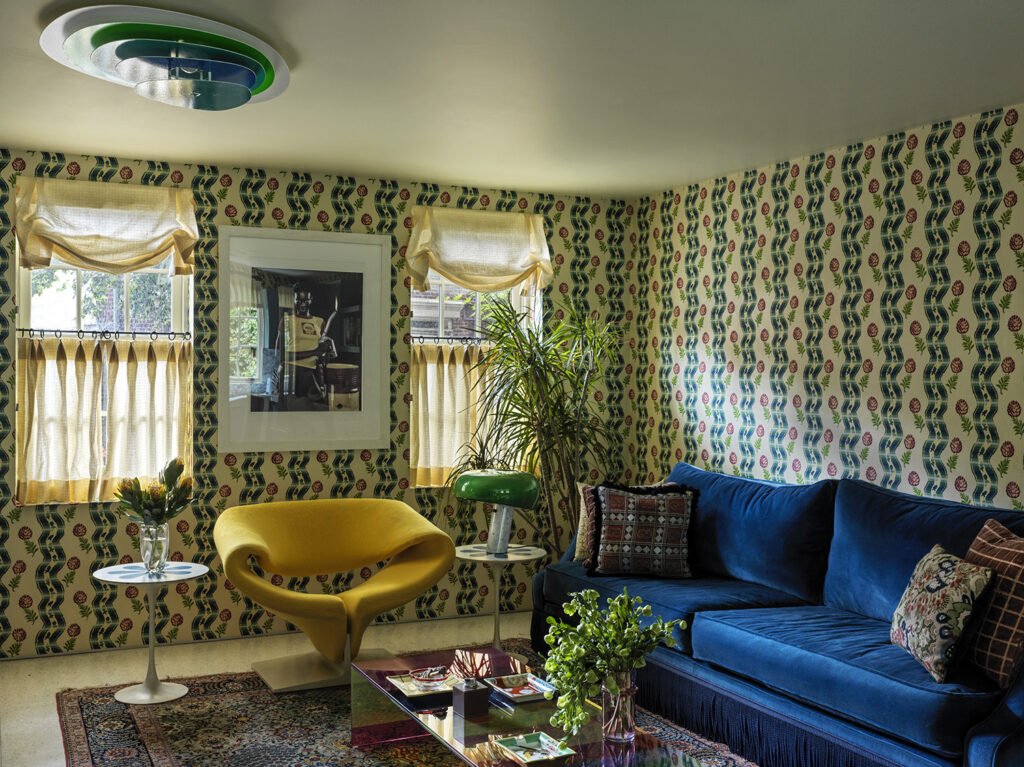
Brutalist
Not to be confused with an industrial style of decor, the brutalist approach to interior design merges the raw and functional elements of minimalism and industrialism to create a powerful arrangement of contrasts. Taking inspiration from the 20th-century architectural movement of Brutalism, these types of interiors are stripped away from any distracting elements as they expose the coarseness of concrete floors and ceilings in combination with the smoothness of steel, glass and wood furnishings. In addition, this movement is about generating confidence in the beauty of simplicity by embracing clean lines, bold angles and geometric silhouettes.
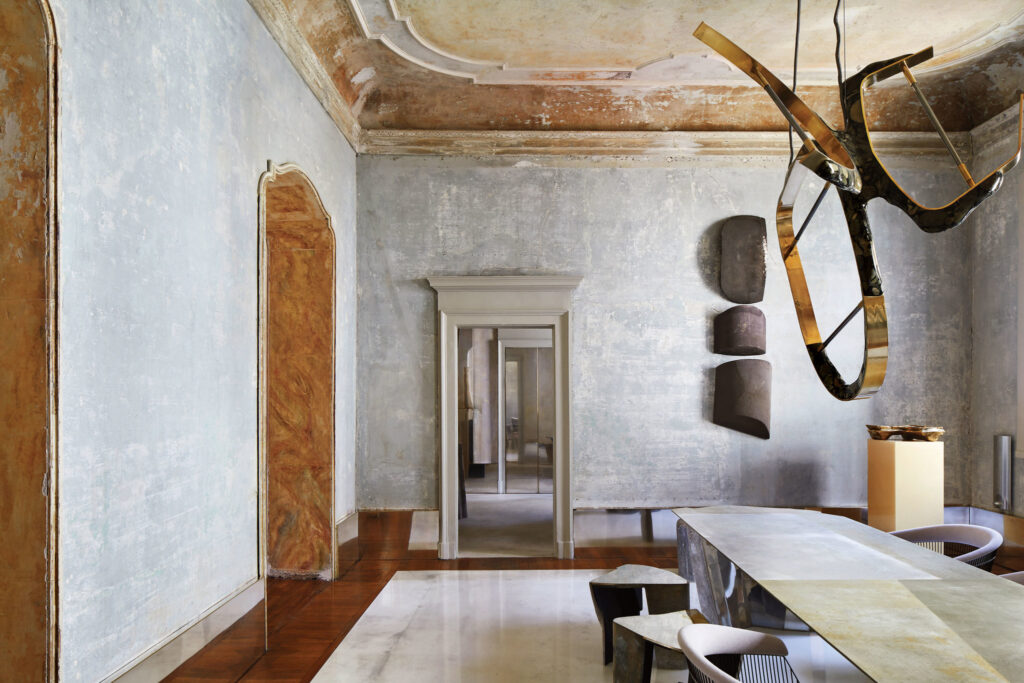
To enhance the impact of these shapes we recommend you to keep a subdued and earthy color palette based on gray, brown, beige, and black that allow the forms and textures of the materials to take the spotlight. In addition, lighting also plays an important role in adding warmth to the raw materials and in creating a statement. Whether it is through the use of natural light maximized by large windows and glass walls or with metal pendants and exposed bulbs, this brightness must be carefully wielded as a natural adornment for the raw composition of your Brutalist interior.
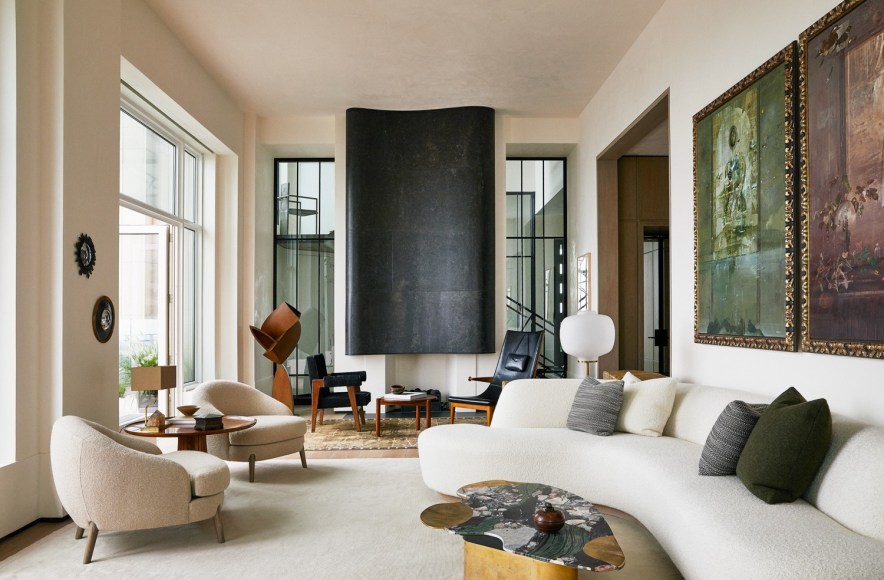
Coastal
As the name reveals, the coastal design style originates from our admiration of the relaxed and breezy atmosphere we find by the seaside. In the search to capture the essence of coastal living, designers incorporate the light and airy color palette of white, cream beige, and soft pastel blues that echo the colors of the sand, sky and beach. These tones are also paired with textures that evoke a coastal feel through natural materials such as light or weathered wood for furniture and rattan, jute, and seagrass in rugs, lampshades and decorative elements. This organic feel can also be reproduced with soft and natural fabrics such as linen or cotton for curtains, upholstery and bedding to allow light to travel past these surfaces and create a cozy and inviting atmosphere. As a final touch, the furniture you select can also align to this aesthetic; especially casual pieces including wicker or rattan chairs, slipcovered sofas, and distressed wooden tables.
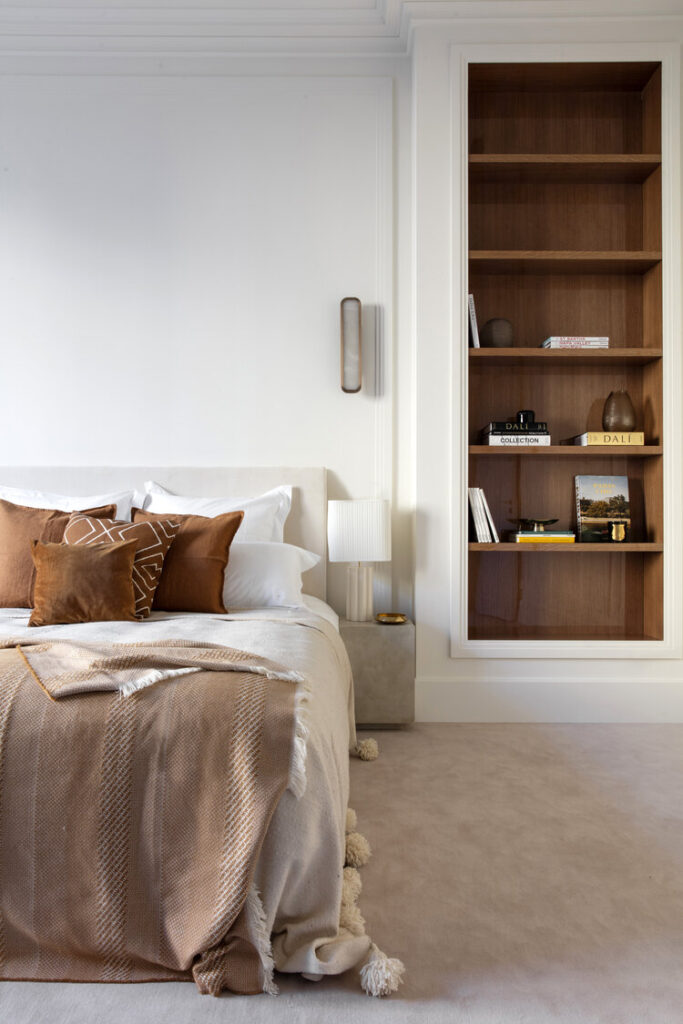
Minimalist
The beauty of minimalism rests in its capacity to generate a lasting impact with just a few elements at its disposal. Rather than focusing on austerity, this décor style celebrates the usefulness and appeal of single, limited objects and highlights overlooked elements such as lighting, the quality of materials used for interiors, and a balanced composition. This clean and functional aesthetic can be recreated by using a neutral color palette limited to shades of white, beige and gray that create a cohesive backdrop. Meanwhile, texture also plays an important role in adding visual interest without overwhelming the eye or cluttering a space. Seeing as minimalist furniture focuses on functionality rather than unnecessary ornamentation, texture can be used as a means of simple adornment through materials such as natural wood, soft fabrics, smooth metals, and rough stone. Similarly, practical lighting can also be used to your aesthetic advantage by incorporating clean and simple fixtures in combination with a maximized use of natural lighting.
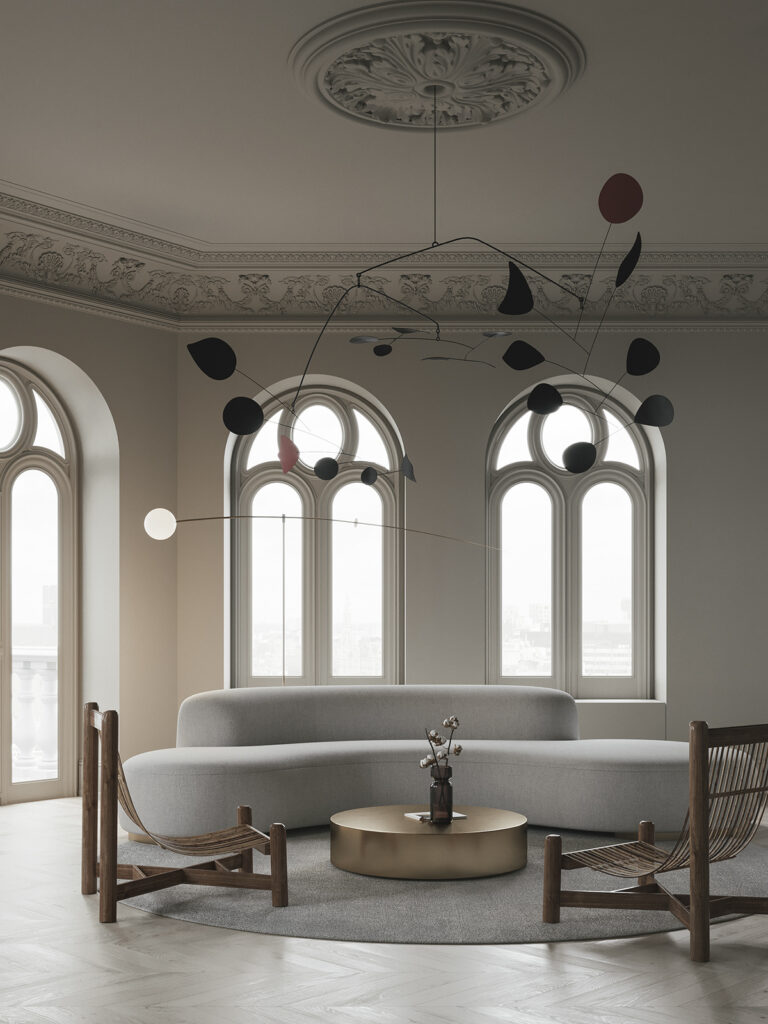
Lastly, we should also remember that minimalism is not opposed to some thoughtful accessorizing. By leaving some blank spaces in a room, we not only create a sense of openness but we allow single statement pieces to take the spotlight and set the ambiance of a room without having to rely on too many decorative elements. This décor style simply reminds us to focus on quality over quantity when selecting a few key pieces of artwork or memorable items that reflect our own personalities.
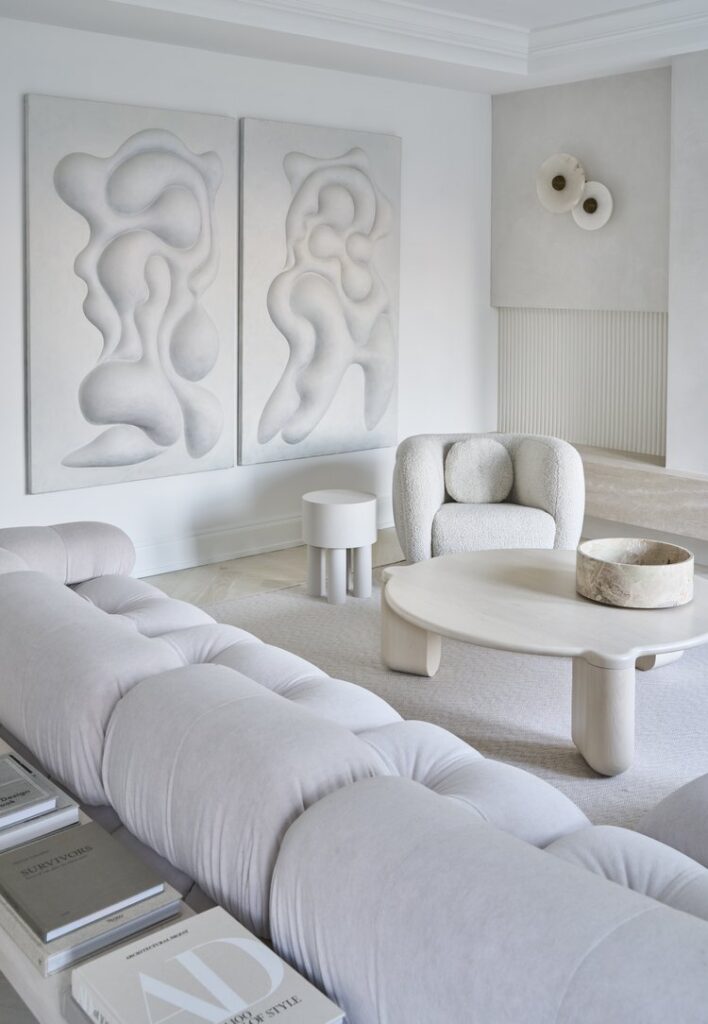
Rustic
Rustic interior design celebrates the beauty of imperfections as reflected in the natural charm of rural and countryside landscapes. In doing so, this style incorporates natural materials, earthy tones, and craftsmanship. The first aspect implies showcasing exposed wood beams, reclaimed wood flooring, and rough-hewn furniture in addition to stone, brick and natural fibers that add a sense of coziness and texture to your interiors. Meanwhile a warm, earth-toned palette composed of rich browns, deep reds, and muted yellows, evokes the raw and homely spirit that we find in nature. The reason why rustic designs focus on this organic element is to help us appreciate the charm and uniqueness that rises from the unexpected. As opposed to industrial mass-produced design, vintage pieces, artisanal items and natural textures showcase authenticity and an alluring roughness that cannot be precisely replicated and must therefore be celebrated for its uniqueness.
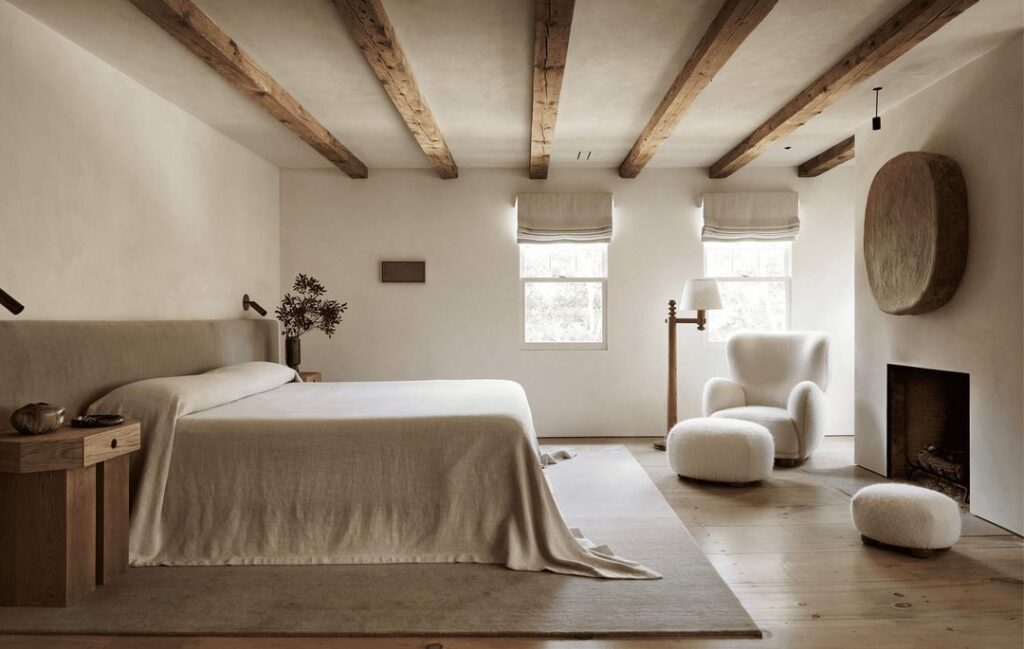
Art Deco
As a time-honored design style, the influence of Art Deco has continued to grace homes and interiors since its initial appearance in the 1920s. The glamorous and geometric aesthetic adorned with bold colors and lavish textures has an undeniably captivating effect that prevents us from taking our gazes away from the scene in place. At first it is the sensory experience promised by the luxurious materials that draws us to this design. Velvet, silk, lacquered wood, chrome and glass are initially responsible for creating the sense of elegance and richness in a room.
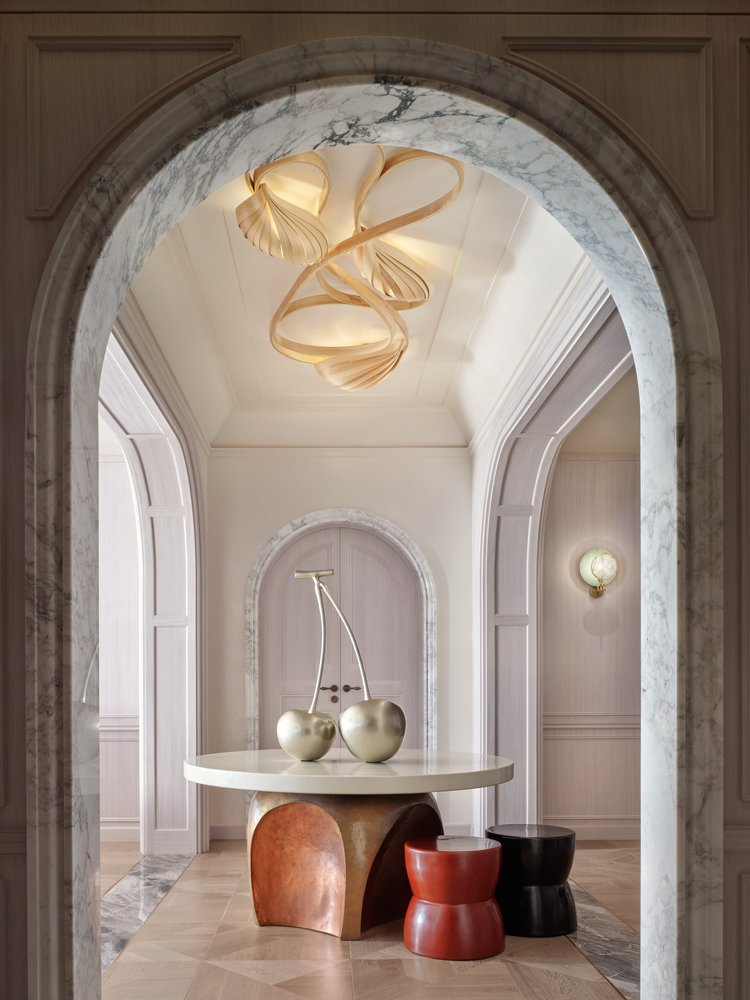
In second place, the opulence of the furnishings and finishes is paired with deep jewel tones against contrasting black and white color schemes or metallic accents of gold and silver to add an enhanced sense of luxury. However, unlike maximalism which is keen on layering various styles of patterns and textures, Art Deco limits itself to a specific selection of iconic motifs such as sunburst and fan patterns which can be featured in wall painting, lighting fixtures and decorative accessories. At last, the incorporation of streamlined, sleek furniture and use of mirrored surfaces with high gloss finishes add the final touch in recreating the Art Deco aesthetic of the famous roaring 20s.
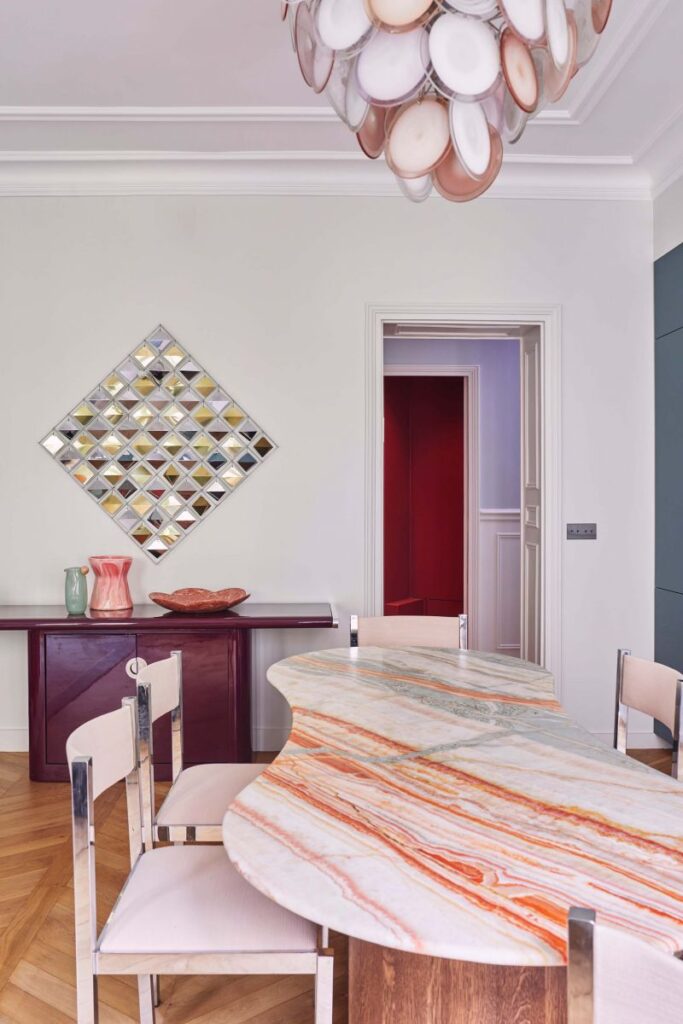
Hollywood Regency
Inspired by the glamor of Hollywood’s golden age in the 1930’s and 1940’s, this design style seeks to capture the classic elements of Art Deco with its own extravagant touch. This can be achieved through the selection of dramatic tones like emerald green, sapphire blue or deep red which create a sense of opulence; especially when reflected against the high-shine finishes of furniture. In addition, the reflective surface of mirrored furniture, metallic accents, and lacquered finishes creates the perfect contrast against sumptuous upholstery or curtain fabrics like velvet, satin, and silk which add depth and a tactile appeal to the composition.
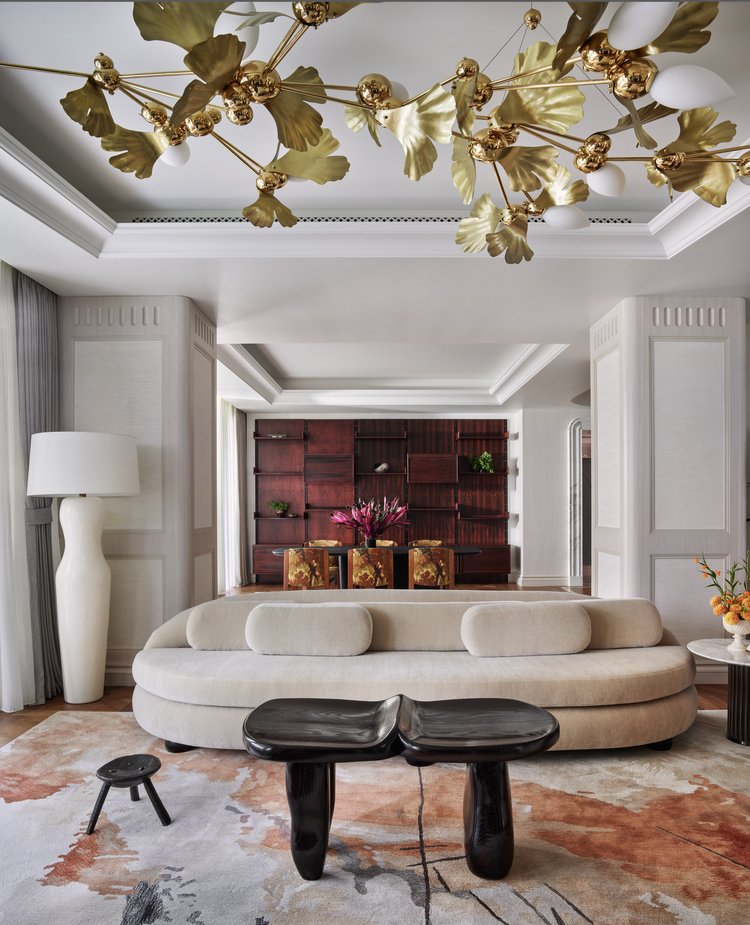
A way to enhance the charm of these elements is by relying on statement lighting which can serve to either cast attention on a specific area or as a focal point by itself. Crystal chandeliers, pendants with ornate designs, or sculptural table lamps are some ways of making a statement while capturing the essence of the Hollywood Regency style. Meanwhile, remembering its origins within Art Deco one can look for ways to imbue vintage accents through furniture with curved lines, scalloped edges, or geometric patterns that bring with them a touch of nostalgia.
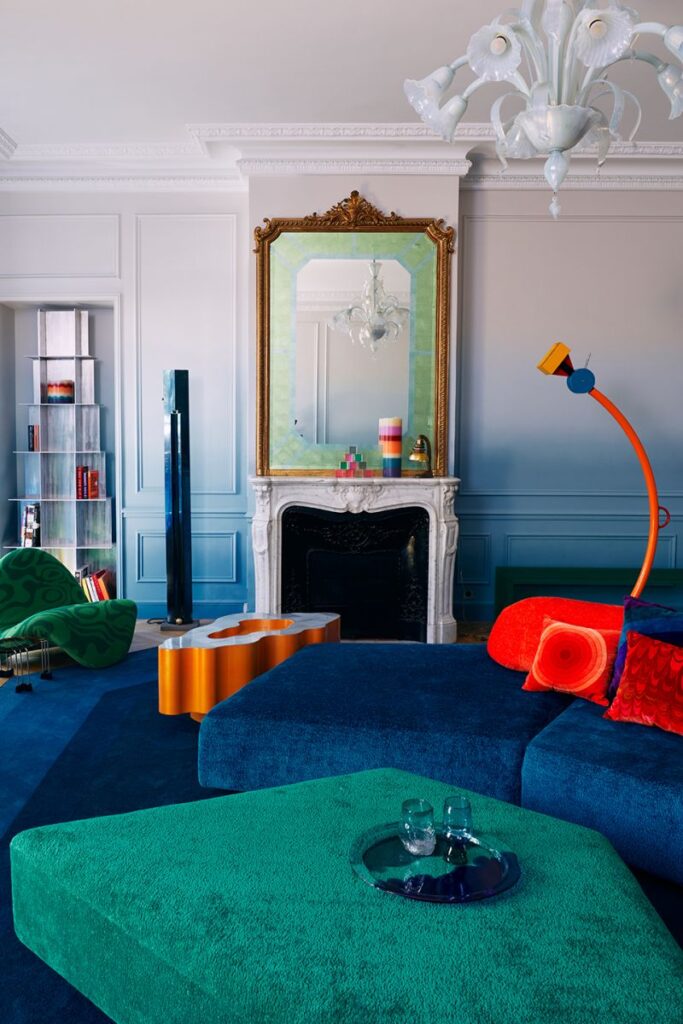
Mid-century Modern
This style, which emerged during the post World War II period, is characterized for its simplicity, functional approach and the fusion between indoor and outdoor spaces. In stepping away from the distractions of more glamorous trends, the Mid-century modern décor opts to focus more on natural elements and the world beyond the walls of an interior by incorporating open floor plans, large windows, and straightforward materials like wood, metal, and glass.
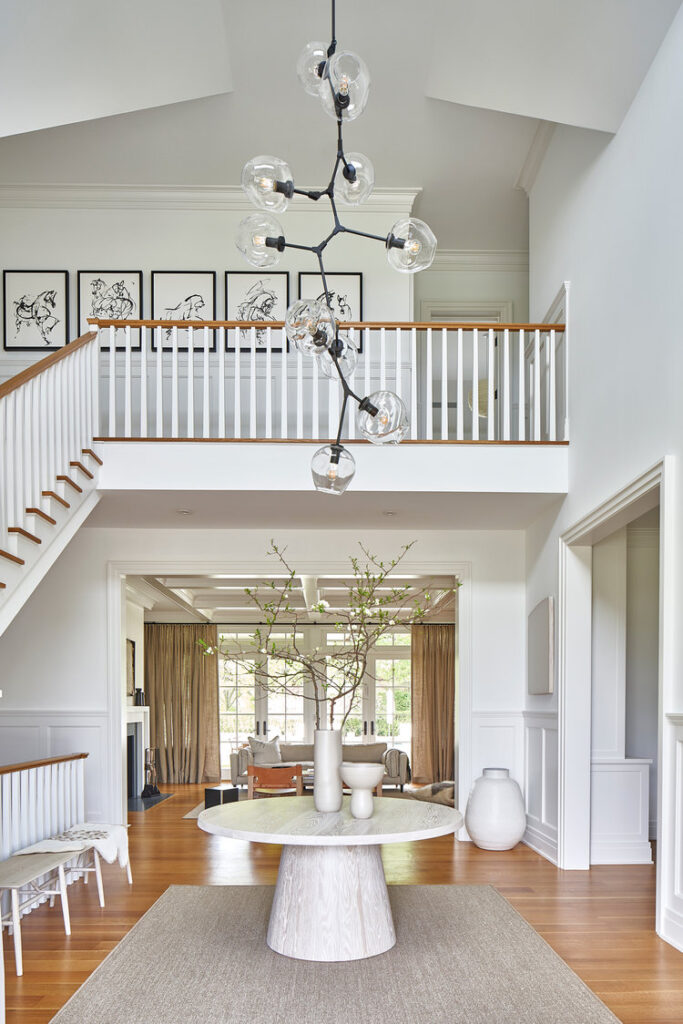
If you are looking to recreate this style, look for minimalist furniture with sleek, clean lines, tapered legs and organic shapes. Additionally, whether it is through furniture, walls or decorative elements, think of embellishing your surfaces with abstract, geometric or nature-inspired patterns and different textures to add depth and interest. You can also combine these motifs with a wide color palette of neutral and bold tones like olive green, mustard yellow, and burnt orange. More vibrant hues that are typical of this design style are teal and turquoise which stand out more when positioned under the glow of sleek and futuristic lighting.
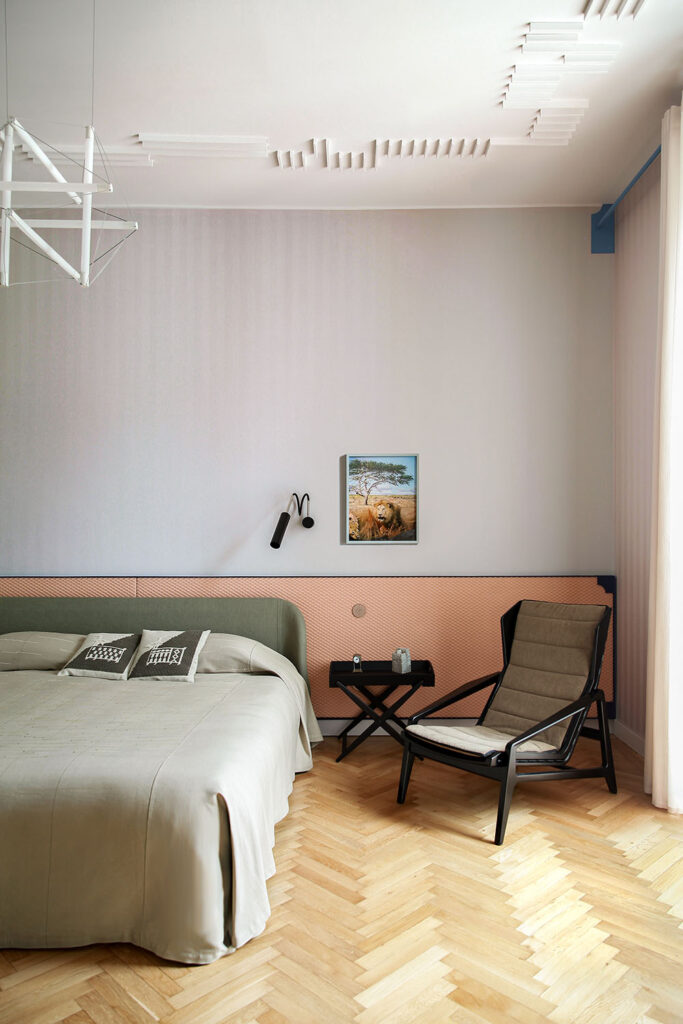
Modern organic
Inspired by nature, the modern organic style blends contemporary elements with natural forms, organic textures, sustainable materials and earthy tones. While striving to embody the ideal image of harmony between humans and nature, this type of interiors embrace the concept of biophilic design based on bringing the outdoors to our home spaces through indoor plants, vertical gardens, and as much natural light as possible.
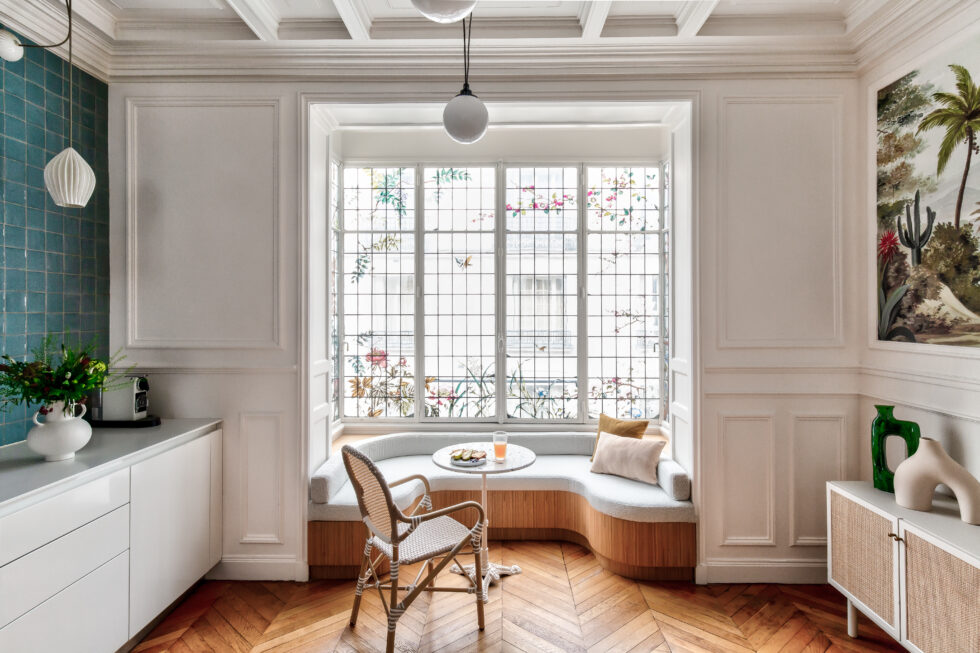
To retain a balance with the environment, the décor must remain clean, uncluttered and focused on the essential elements. By opting for minimalism, one can make use of the negative space to create a sense of tranquility and openness. With less distractions and ornamentation one can emphasize the value and raw beauty of handcrafted and artisanal products. Modern organic design celebrates the personal touch that these items can bring to your space through handmade pottery, woven baskets, locally sourced artwork, or one of a kind furniture pieces.
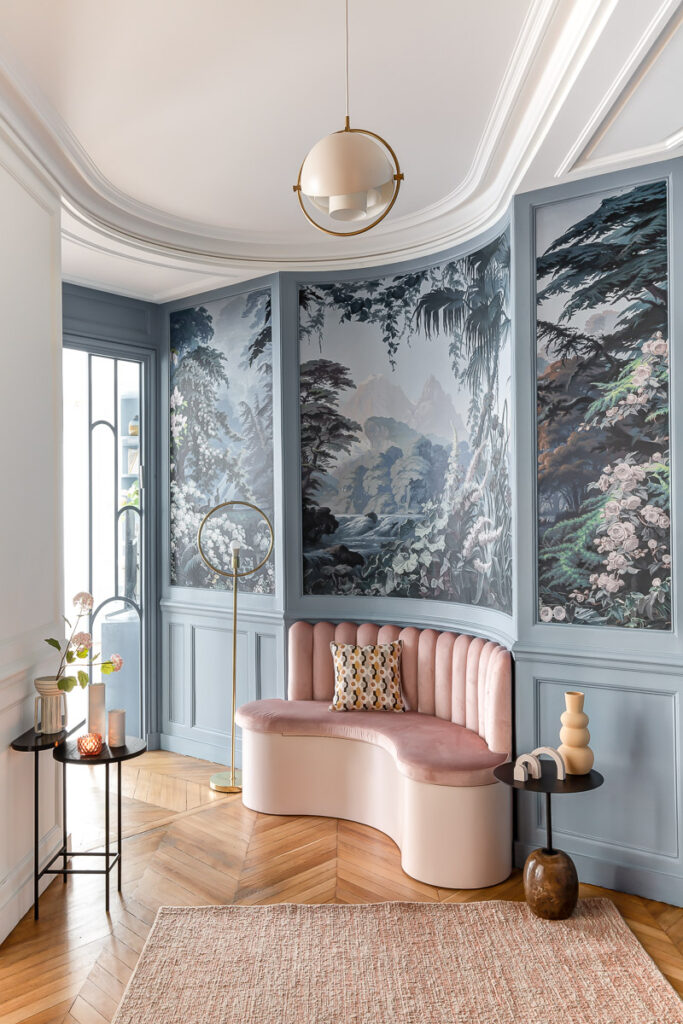
Wrapping up
The nine modern interior design trends we have presented today may be associated with contemporary interiors; however, their origins or source of inspiration may date back to past decades. The reason we consider them modern is because every year designers and the public add their own personal touch to these trends and transform them into better versions of themselves. This is how design evolves and for this reason we are excited to see how these nine trends will unfold in the future.
